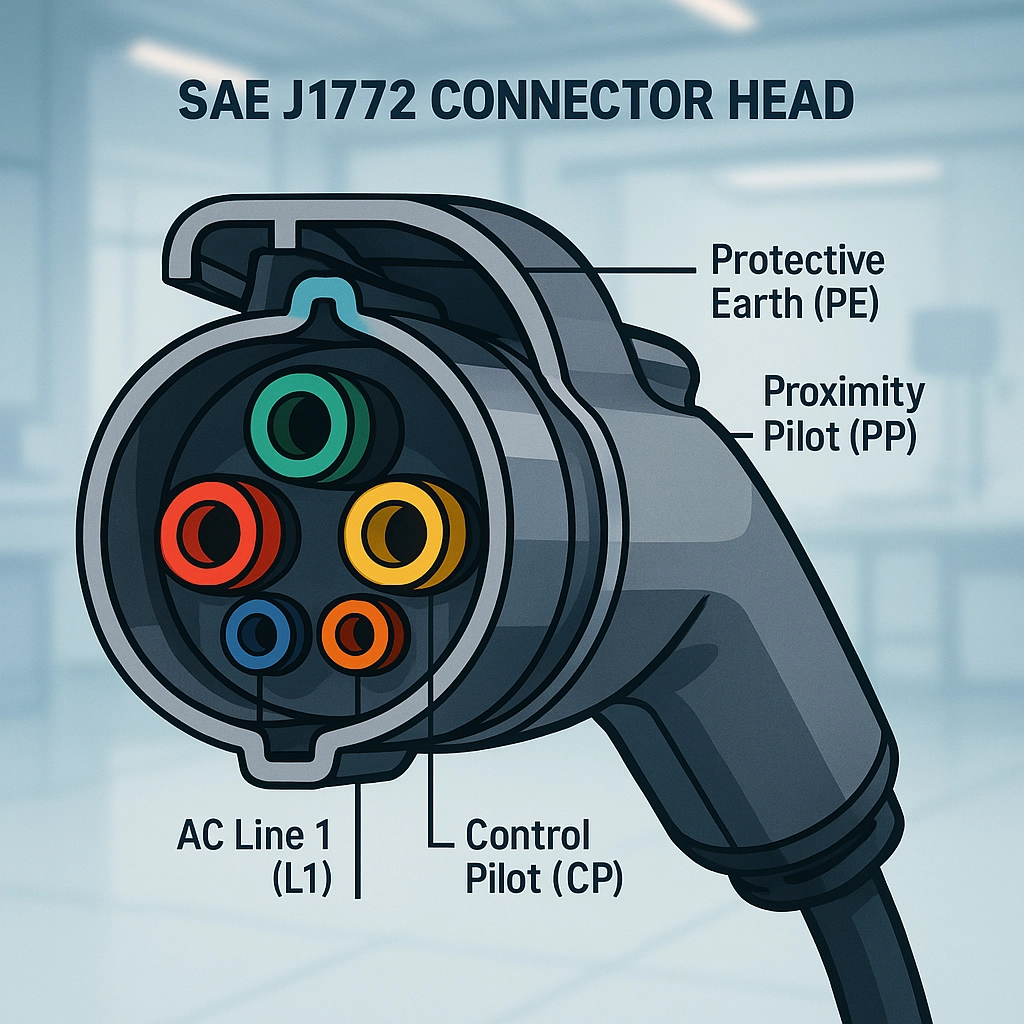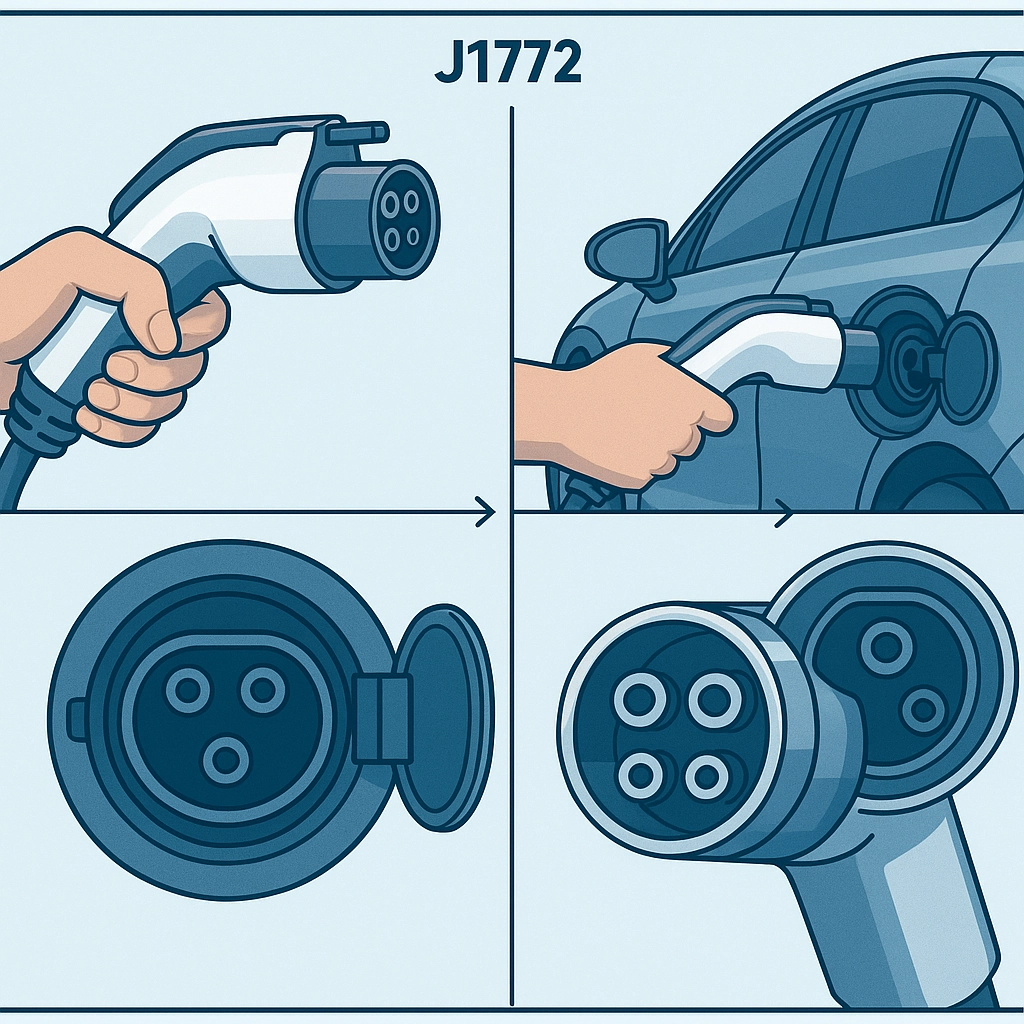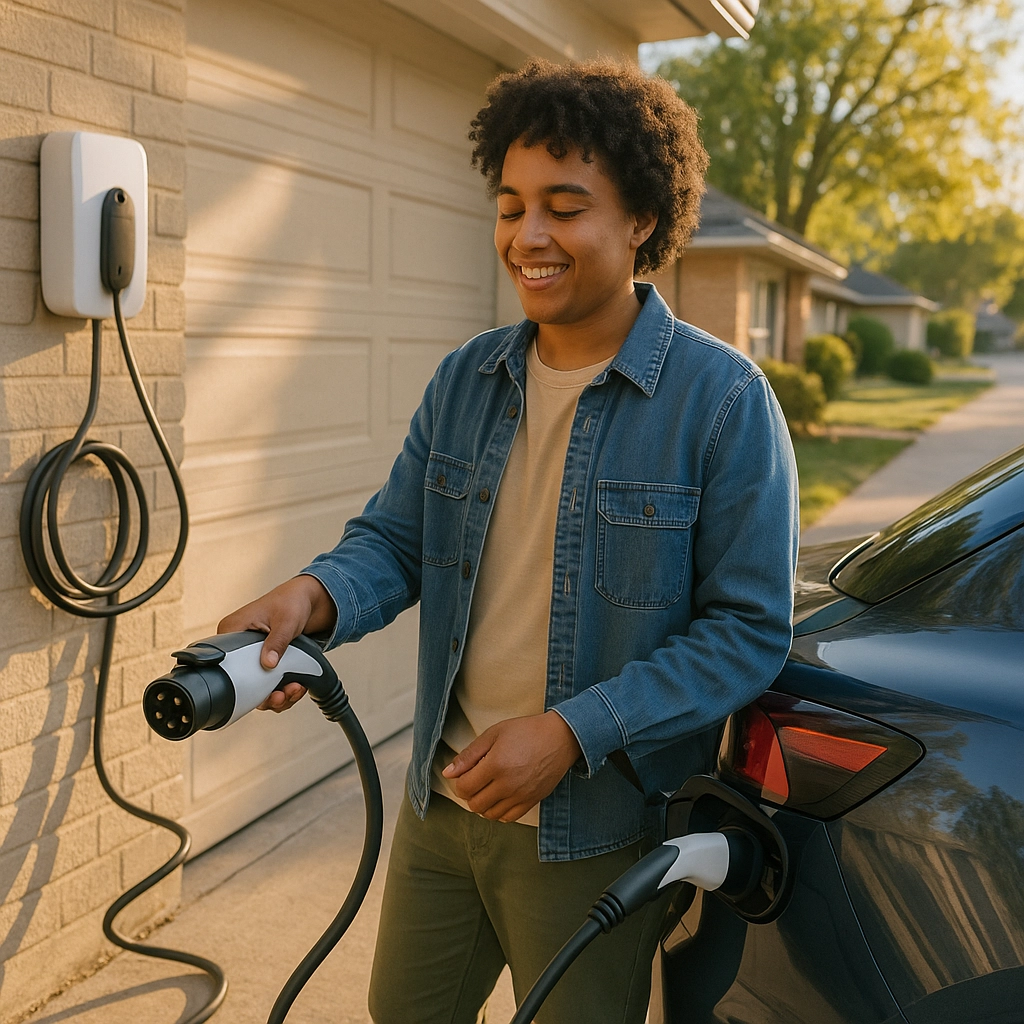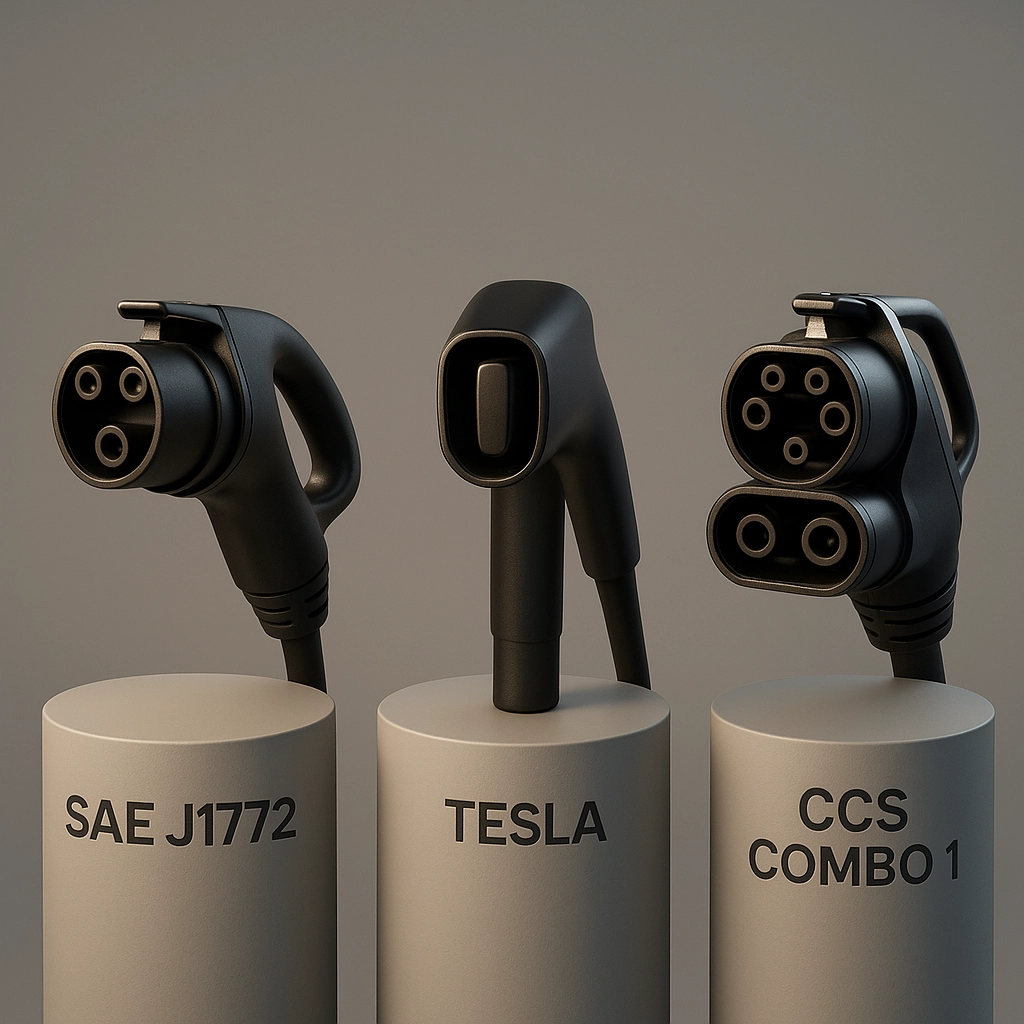Understanding the SAE J1772 Connector: The Standard Plug for Electric Vehicles
- nickwilson1990
- 3 hours ago
- 5 min read
The SAE J1772 connector, sometimes called the “J plug,” is the charging port that unlocked the electric vehicle (EV) revolution in North America. If you drive, lease, or are considering an EV, chances are this is the connector you’ll use the most—unless you own a Tesla. Let’s break down what makes the SAE J1772 such a key player in the charging game, how it works, and why it matters for everyone interested in the future of transport.
What Is the SAE J1772 Connector?
The SAE J1772 connector is the official North American standard for electric vehicle charging using alternating current (AC)—the same type of electricity that powers your house. Created by SAE International (the Society of Automotive Engineers), this connector sets the rules for how electric cars and plug-in hybrids in the US, Canada, and parts of Japan “talk to” charging stations for safe, reliable, and universal charging.
Think of J1772 as the EV world’s version of the classic three-prong wall socket—a recognizable, nation-wide standard that works for almost every non-Tesla electric vehicle.
The Technical Side—Specs at a Glance
Let’s demystify some of the engineering underneath the plug’s friendly exterior:
Charging type: AC (alternating current)
Supported charging levels: Level 1 (slow) and Level 2 (fast) charging
Voltage: 120V (Level 1) up to 240V (Level 2)
Amperage: Up to 80A (typically 16A–32A for most home and public chargers)
Maximum power: Up to 19.2 kW (kilowatts)
Number of pins: 5

This range covers the power you’d get from a basic outlet at home (slow trickle charging) all the way to commercial charging stations that can refill most EVs in just a few hours.
Design and Pinout—What’s Inside the Plug?
Unlike a regular household outlet, the J1772 connector’s five pins each have a well-defined job:
AC Line 1 (L1): Brings in the main supply of electricity.
AC Line 2 / Neutral (L2/N): Supports higher power transmission.
Ground (Earth): Safety—protects you and your car from electrical faults.
Control Pilot (CP): Let’s the car and charger “chat” about maximum power delivery and proper connection.
Proximity Pilot (PP): Senses presence and prevents drive-off during charging.
Here’s an analogy: Think of each pin like a different messenger in charge of a specific part of the charging handshake. Without the right handshake, the car won’t accept power! This careful design keeps EV charging safe and helps prevent both shocks and accidental drive-aways.

Charging Speeds and Levels—How Fast Is J1772?
The SAE J1772 supports two main “levels” of charging:
Level 1 (120V): Plugs into a regular household outlet, perfect for overnight charging. Adds about 3-5 miles of range per hour.
Level 2 (240V): Uses a beefier outlet (like a clothes dryer), or a dedicated station. Adds 15–30+ miles of range per hour.
Most public chargers, and nearly all home wallbox chargers, are Level 2 J1772. It isn’t the quickest method (which would be DC fast charging—see below), but it’s ideal for daily driving and works almost everywhere.
History and Evolution—Where Did J1772 Come From?
In the early days of electric vehicles, charging was the Wild West: different carmakers had their own proprietary plugs, leading to confusion and inconvenience. In 2001, SAE International introduced the first J1772 standard. As automakers and charger manufacturers adopted it, the industry got the universal compatibility that helped EVs move from niche toys to mainstream options.
By 2010, nearly all major plug-in vehicles in North America—Chevrolet Volt, Nissan Leaf, Ford Focus Electric, BMWi, and many more—were shipping with J1772 ports. Today, only Tesla deviates from the standard connector on their cars (but even Tesla owners can use adapters for J1772 ports).
Compatibility—Which Cars and Chargers Use SAE J1772?
Nearly all North American non-Tesla EVs (Nissan, Chevrolet, Ford, Hyundai, Kia, BMW, Volkswagen, Honda, Toyota, etc.)
Plug-in hybrid vehicles (PHEVs) from most brands
Public charging stations: All non-proprietary chargers in the US and Canada
Home wall chargers for non-Tesla EVs
Tesla owners: While your car uses its own proprietary plug, you can purchase a simple adapter that lets you plug into any J1772 charger. That means J1772 genuinely works (directly or with an adapter) for nearly every EV on North American roads!
Safety and User Experience—Plug in and Relax
SAE J1772 was designed with safety and simplicity at its core. Here’s how that plays out:
No sparks: The plug only becomes electrically “live” after it’s firmly connected, reducing shock risk.
Can’t drive away mid-charge: Built-in proximity sensors mean your car remains parked until you physically disconnect the charger.
Automatic communication: The car and charger “negotiate” power levels, so charging is as fast as your vehicle and the station allow—no guesswork.
Plugging in is as simple as inserting the connector, waiting for the click, and walking away. Unplugging is just as easy. This straightforward experience removes hurdles for new EV owners who might otherwise be intimidated.

The Role of J1772 in EV Adoption and Charging Infrastructure
Imagine if every phone used a different charging cord—public chargers would be a nightmare! J1772’s universal nature:
Makes public charging stations easier to deploy: No need for countless connector types.
Encourages EV purchases: Buyers know they can recharge at practically any non-Tesla station.
Supports infrastructure scaling: Fleets, apartments, workplaces, and public venues can use the same hardware.
In essence, J1772 gave the EV industry a "common language," helping it grow rapidly by providing predictability and reliability.
Extending Beyond J1772—The Move Toward Fast Charging
While J1772 pins are for AC charging, the world of electric vehicles is charging ahead—literally! For much faster charging (think 20–80% in 30 minutes or less), many stations and cars use the Combined Charging System (CCS) Combo 1 plug. This builds on the J1772 design by adding two extra large pins underneath, supporting direct current (DC) charging at up to 350 kW.
Here’s how to think about it:
J1772 = AC charging: Everyday charging at home or in town; slower, but gentle on the battery.
CCS1 = AC + DC fast: The “combo” plug does both by merging J1772 with ultra-fast DC capability.
Tesla developed its own Supercharger system, but recent moves in the industry mean its North American Charging Standard (NACS) is also being embraced by other automakers for future vehicles, opening the doors to even more flexible charging.

Why Does SAE J1772 Matter?
Reliability: You can count on it at nearly every public charger.
Safety: Carefully engineered with multiple safety and communication features.
Simplicity: One plug for almost every EV.
Future-proof foundation: All major progress in North American charging, from Level 1 to fast charging, builds on the groundwork J1772 laid.
For non-experts, you can think of SAE J1772 the way we think of USB ports for computers—a trusted connection that works almost everywhere and just makes life easier.
Final Thoughts: The Unsung Hero Behind the EV Revolution
While it’s not as flashy as a new electric car or a super-fast charging station, the SAE J1772 connector is quietly one of the most important innovations in making electric vehicles practical and accessible to millions. Thanks to this humble standard, “charging my car” is now as straightforward as “plugging in my phone.”
As you navigate the ever-evolving world of EVs, knowing how the J1772 works, and why it exists, is a powerful piece of knowledge—making you a more informed driver and supporter of the clean transportation movement.

